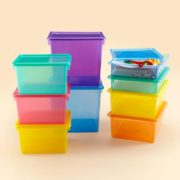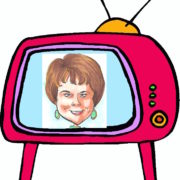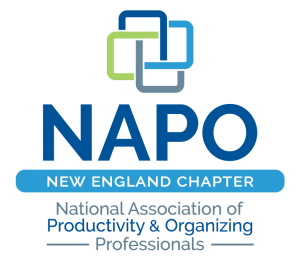When is Enough?
 Have you ever ask yourself, “When do I have enough?” Is enough when every drawer and cupboard in our homes are stuffed to the max? Is enough when we can’t possible fit another thing in our closets? Is enough when we can’t see the walls in the kid’s playroom because the toys are stacked to the ceiling? It’s an interesting question, and I know the answer is different for everyone.
Have you ever ask yourself, “When do I have enough?” Is enough when every drawer and cupboard in our homes are stuffed to the max? Is enough when we can’t possible fit another thing in our closets? Is enough when we can’t see the walls in the kid’s playroom because the toys are stacked to the ceiling? It’s an interesting question, and I know the answer is different for everyone.
So, I challenge you to go through your personal possessions, and the rooms in your home, and ask yourself, “Do I have enough?” Open your closet and ask yourself, “Do I have enough shoes? Handbags?” Pull out your kitchen drawer and ask yourself, “Do I have enough gadgets?” Look at your bookcase and ask yourself, “Do I have enough books?” Open your desk drawer and ask yourself, “Do I have enough technology? Office supplies?” What answers did you come up with?
Deciding when you have enough maybe something new to you. It may be something you’ve never really thought of before. If that is the case here are a few guidelines that can help you.
- Use containers as your guide. For example allow yourself one bin of handbags. When the bin is full, and you can still close it, you have enough handbags. This guide can also be used for toys, DVDs, decorations, games, and craft supplies.
- Pick a maximum number and use that as your guide. So, pick a number that will signify when you have enough of something, and only keep that number. For example keep only 2 sets of towels per person. This guide can also be used for bed sheets, coffee mugs, eye glasses, water bottles, and umbrellas.
- Use organizing products as your guide. For example allow yourself one shoe rack. When the shoe rack is full, you have enough shoes. This guide can also be used for books, tools, jewelry, cosmetics, and kitchen utensils.
- Use a date as your guide by creating your own expiration date. For example give yourself 3 months to use a recipe by putting an expiration date on the recipes when it’s received or printed. This guide can also be used for magazines, unmatched socks, catalogues, and things waiting to be repaired.
Setting up guidelines will help you know when you have enough, but what then? What do you do with the extra and surplus? I practice the one in, one out rule. This means if something new pushes me beyond the “enough” mark, something old has to go. For example if I get a new pair of shoes, then an old pair has to be donated. This also helps when I’m shopping, because now I’ve gotten in the habit of asking myself, “If I buy this, what will I let go?” This requires time and practice, I know, but I’d like to hear your progress on finding your ENOUGH.
Another helpful organizing tip can be read in my blog about exit strategies.
©September 2017 Janine Cavanaugh, Certified Professional Organizer® All Rights Reserved



 How often do you go through your pocketbook and get rid of all that can be tossed? Do you wait until you find yourself sifting through a crumpled mess of old receipts and candy wrappers? Do you hold off until your arm gets sore from hefting all that loose change that’s fallen to the bottom of your bag? Or, do you simply switch your wallet and cell phone to a different pocketbook when the mess gets too cumbersome to deal with?
How often do you go through your pocketbook and get rid of all that can be tossed? Do you wait until you find yourself sifting through a crumpled mess of old receipts and candy wrappers? Do you hold off until your arm gets sore from hefting all that loose change that’s fallen to the bottom of your bag? Or, do you simply switch your wallet and cell phone to a different pocketbook when the mess gets too cumbersome to deal with?







Follow Me